There were few buildings, which are necessary at any border crossing, but it was not a town. In front of the buildings were shelters made of scraps of wood, fabric and other materials, inside women cooked and made meals for weary travelers. Dogs scavenged; a woman carrying two squawking turkeys crossed the International Bridge over the Rio Macara that separates Ecuador from Peru.
With our passports stamped into Peru, we headed up the hill to find a house where vehicle insurance is sold. We were early and the women opened up still wearing her pyjama pants and a baggy T-shirt, behind her a hungry baby cried in the kitchen. “We will be in Peru for two months,” Tom said.
Across the road, we entered the customs office. A man neatly dressed in a uniform filled in several forms, and then called his assistant to come and photocopy our passports and vehicle insurance. The antique Xerox printer struggled to print, after several attempts he looked at us and smiled, “I keep your photocopy please?” We agreed he could have our copy; we had never met such a nice happy customs officer. Then we waited while he painstakingly entered all the information into an equally antiquated computer. It took an hour of his time but he continued to be friendly and smiling at us repeatedly reassuring us that we would be on our way soon.
Enlarge
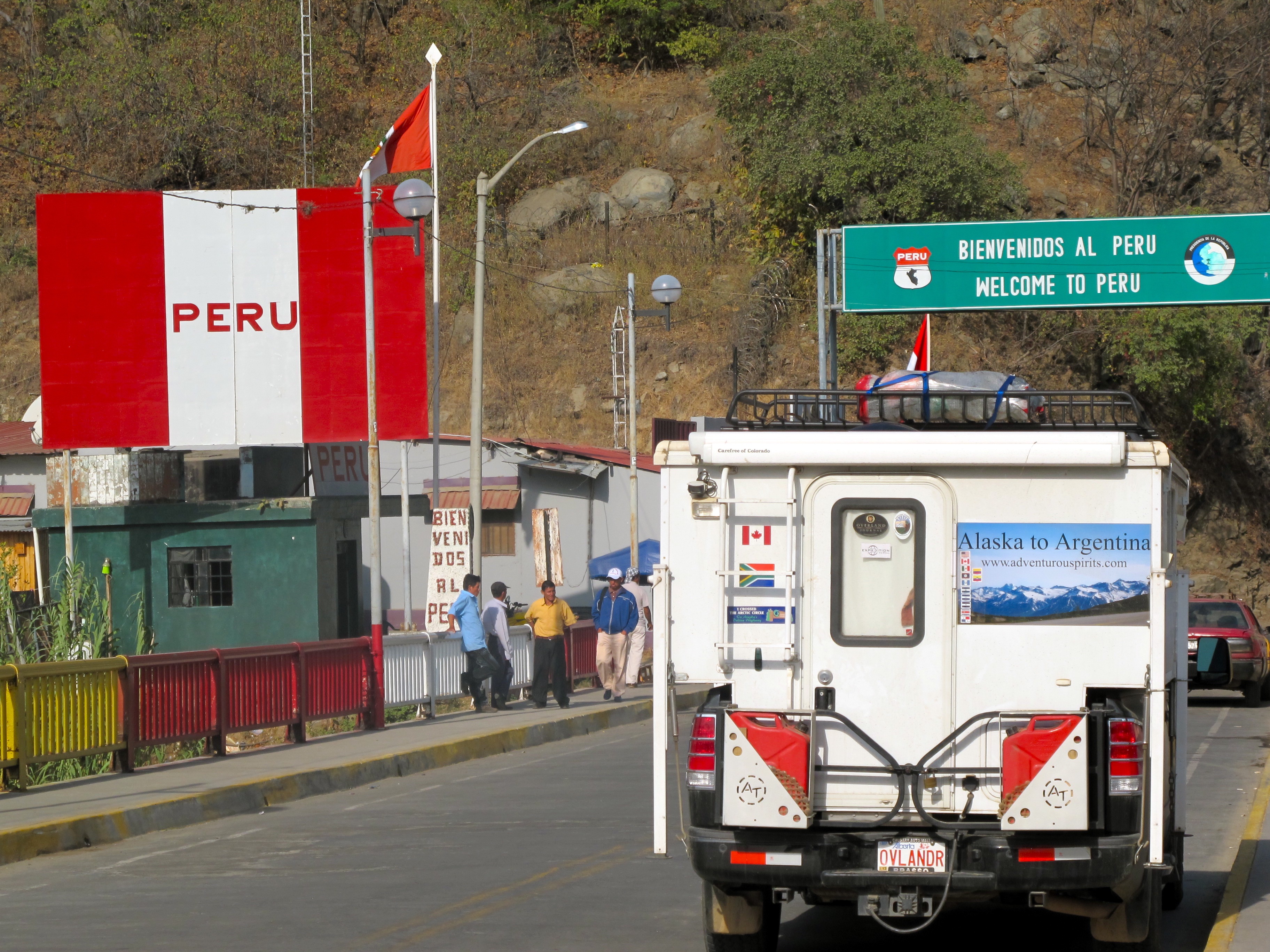
Adventurouspirits
Enlarge
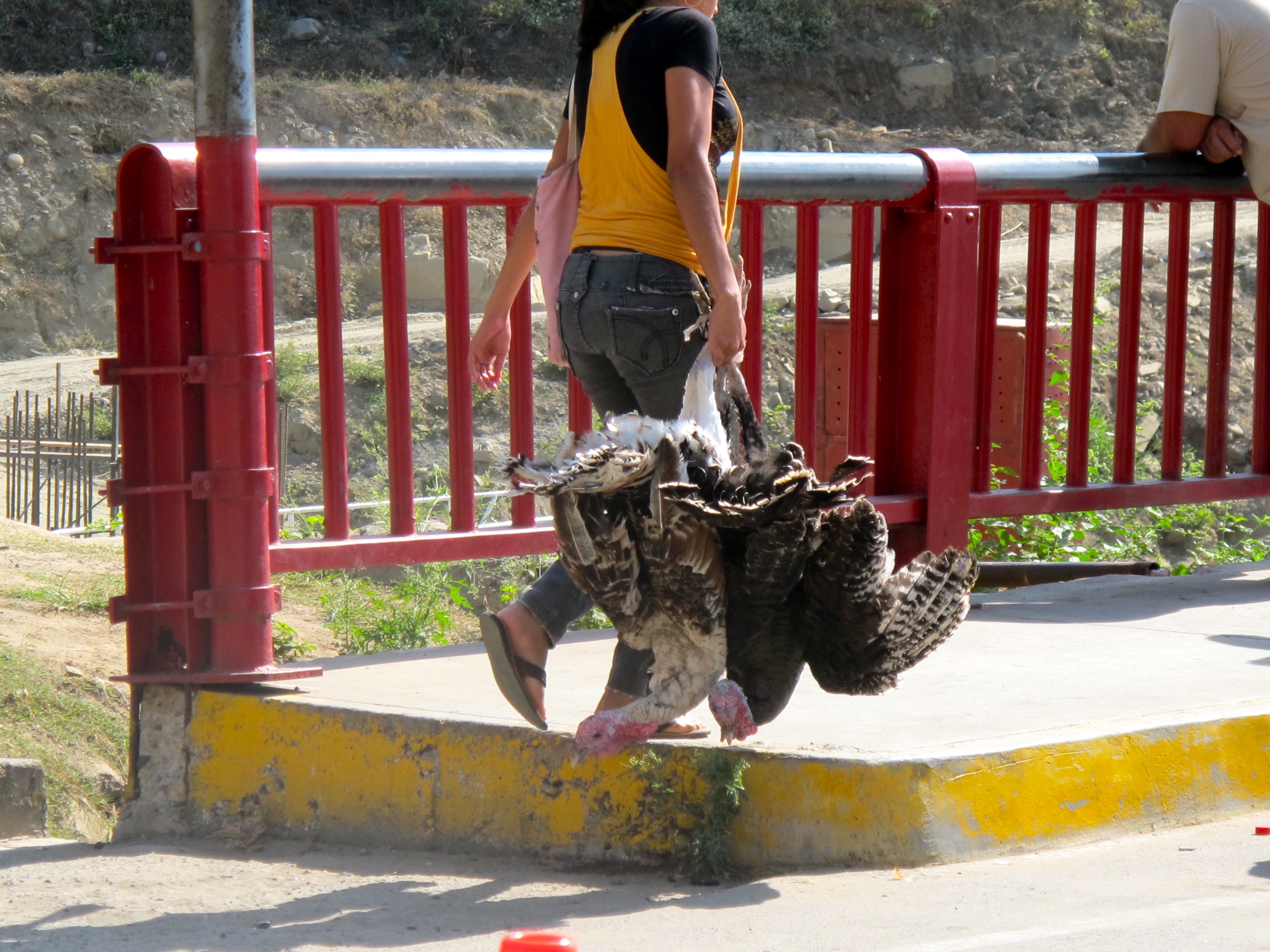
Adventurouspirits
Northern Peru is remote and we travel south along the Pan American Highway. The few small villages seem tired and dirty. Litter and rubbish is strewn everywhere around each village. Homes seem primitive and fragile. Hastily built to keep out the dust and rubbish around them. We travel across the formidable Sechura desert and for over 200km, there are no villages or signs of life; it is remote and the wind whips the sand across the highway and with it, some litter.
Enlarge

Adventurouspirits
We arrive just north of Chiclayo and head for a Peruvian farm were we could camp. Dogs yapped as they run up to greet us, chickens kick up the ground in search of food, the horses and cows being fed completely ignore us but the bull runs up against the wall and leans hard and stares at us. I hope the wall holds; I hope this bull cannot jump over the wall.
Enlarge

Adventurouspirits
The Peruvians are friendly, and work hard, feeding the animals, working in the fields. A young man feeds the calves milk from a large grey bucket with a big red teat. At night, the calves sleep in a pen alongside their house. There are flies and dust everywhere. We are given fresh milk, eggs and bread. It feels so good to be out in the country.
Enlarge

Adventurouspirits
The following morning we saddle up and head out in search of Sipan ruins located in the Santuario Histórico Bosques del Pómac with Rio La Leche (National Sanctuary of the Pomoc Forest in the Valley of Le Leche.) Dominated by the Algarrobo tree, this ancient forest is the largest dry forest in the western South America. The Peruvian Paso horse is a local breed, which has been developed for its unique gait and is supposedly comfortable to ride. Not so!! Okay so my riding skills leave something to be desired but my bum was sore after 6 hours in the saddle, however the pain was worth it.
Enlarge
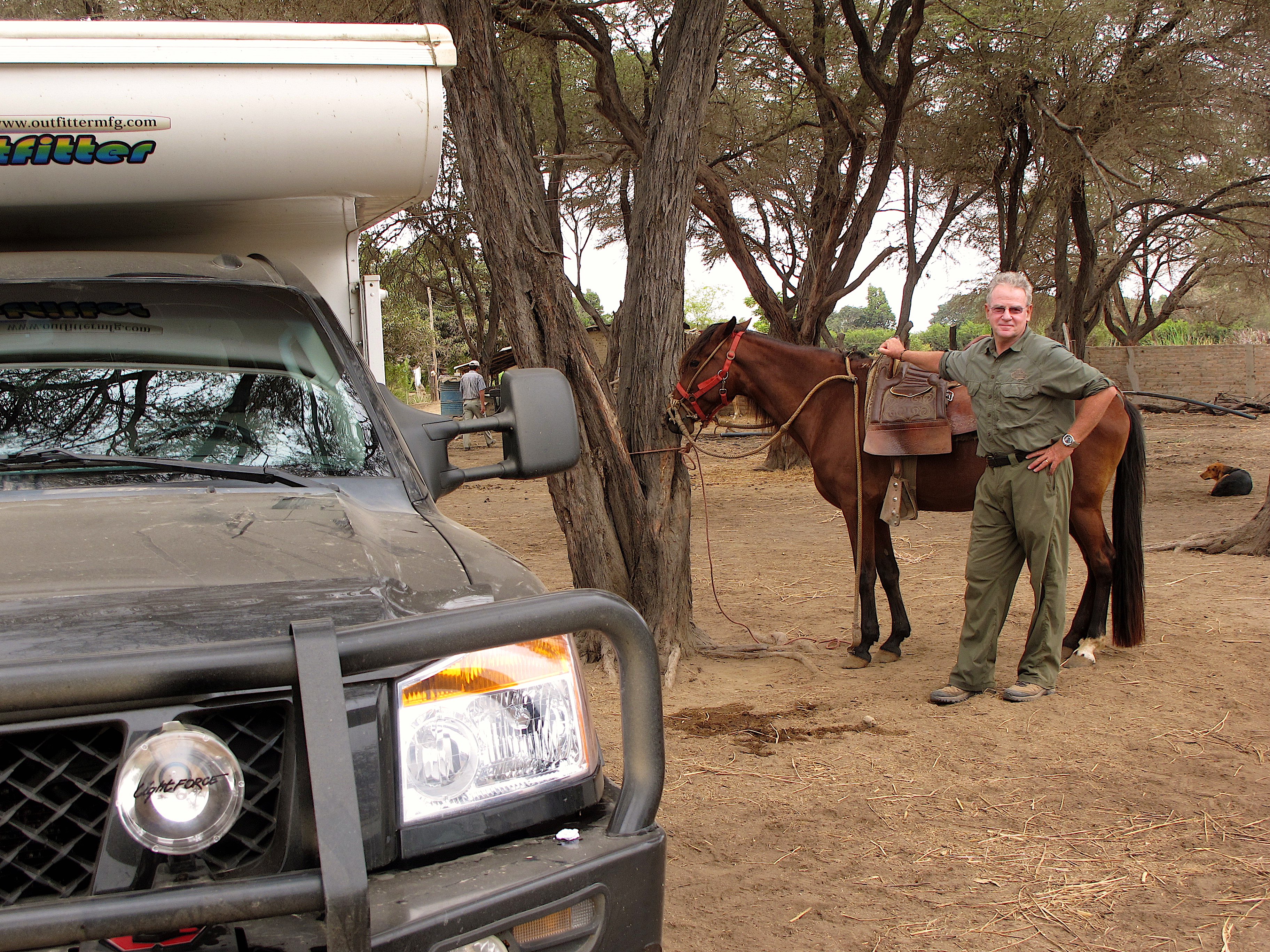
Adventurouspirits
Enlarge
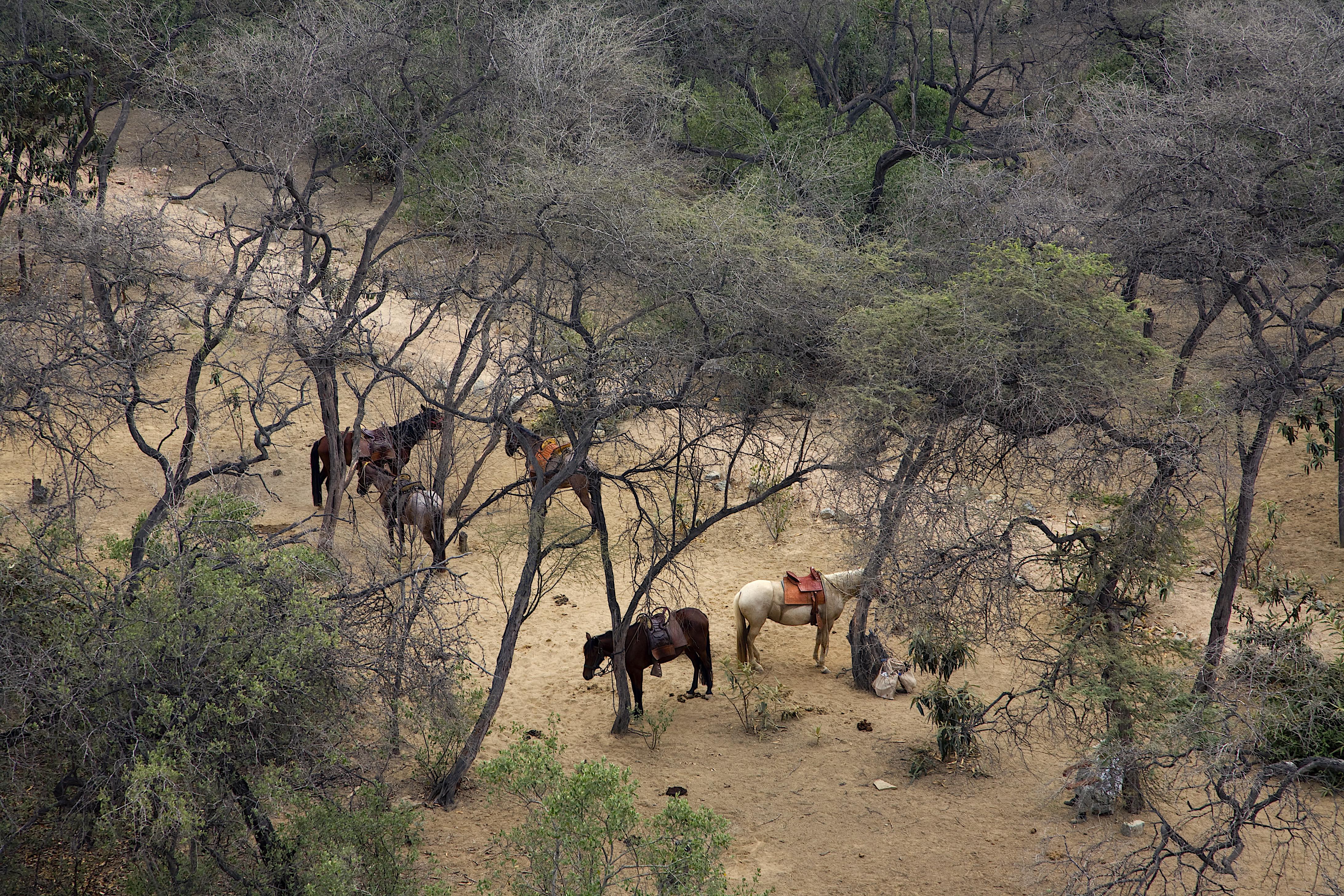
Adventurouspirits
Enlarge
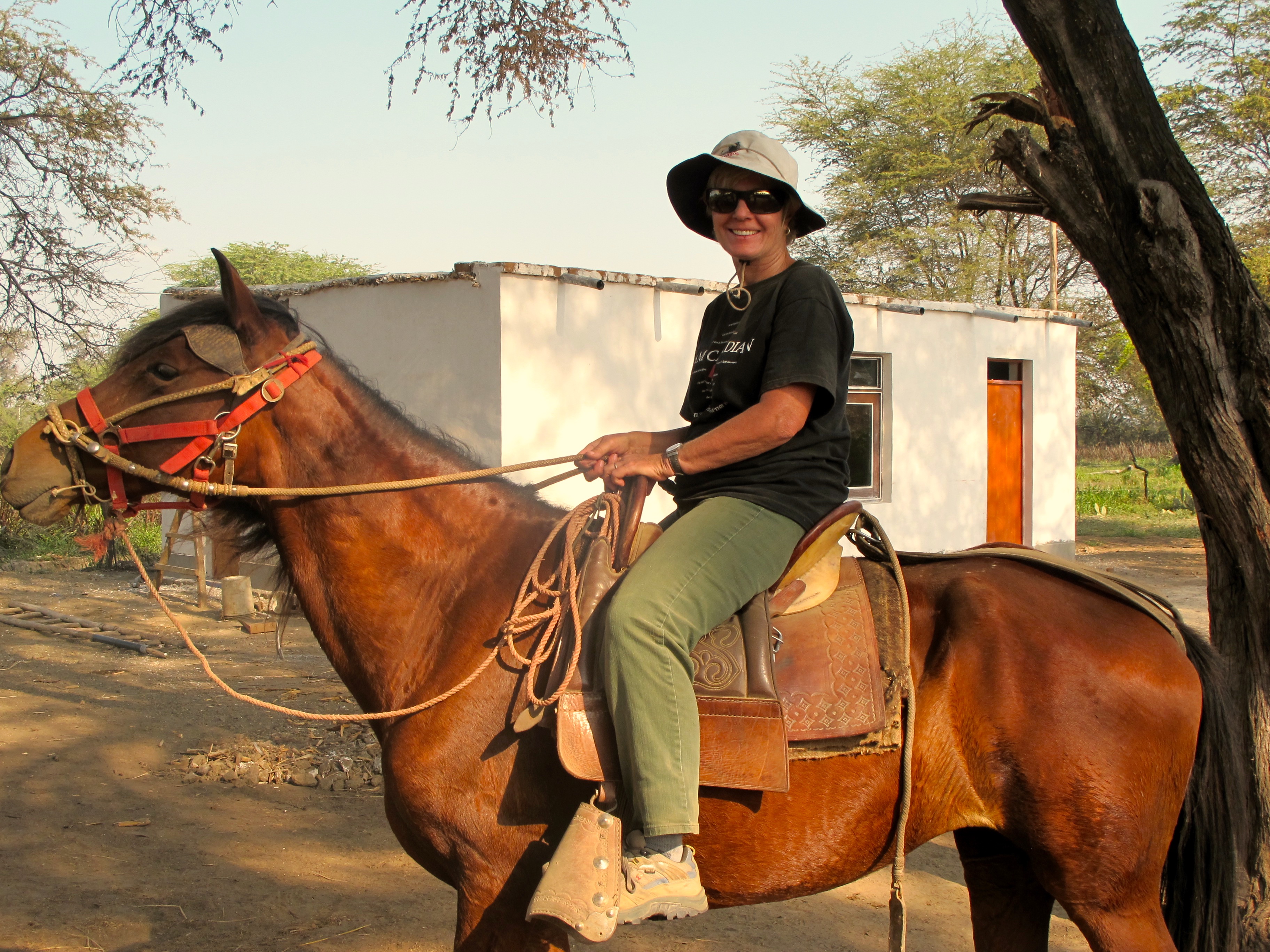
Adventurouspirits
Trotting along tracks littered and strewn with rubbish we finally reached the forest. We pass little burrowing owls, mockingbirds followed us above in the trees and cardinals joined us for lunch. We scrambled up to the top of the pyramid built of adobe brick, now looking more like one huge giant anthill with a view over the dry forest that seemed to be endless in all directions.
Enlarge

Adventurouspirits
Enlarge

Adventurouspirits
We visited two archaeological sites, Huaca Sontillo and Huaca las Ventanas. This area is a wealth of archaeological heritage. Northern Peru had several civilizations stretching back over 5000 years. Unlike the Egyptian Pyramids, which were made of rock, the Peruvian pyramids were made of blocks of mud and so have not withstood the test of time as well as the pyramids in Egypt. Many were robbed of their treasures before archaeologists were able to secure the areas. We watched the workers painstakingly brush the dust from the digs to reveal evidence of past communities. A skeleton of a llama lay under a blue tarpaulin, further on human skeletal remains are found.
Enlarge
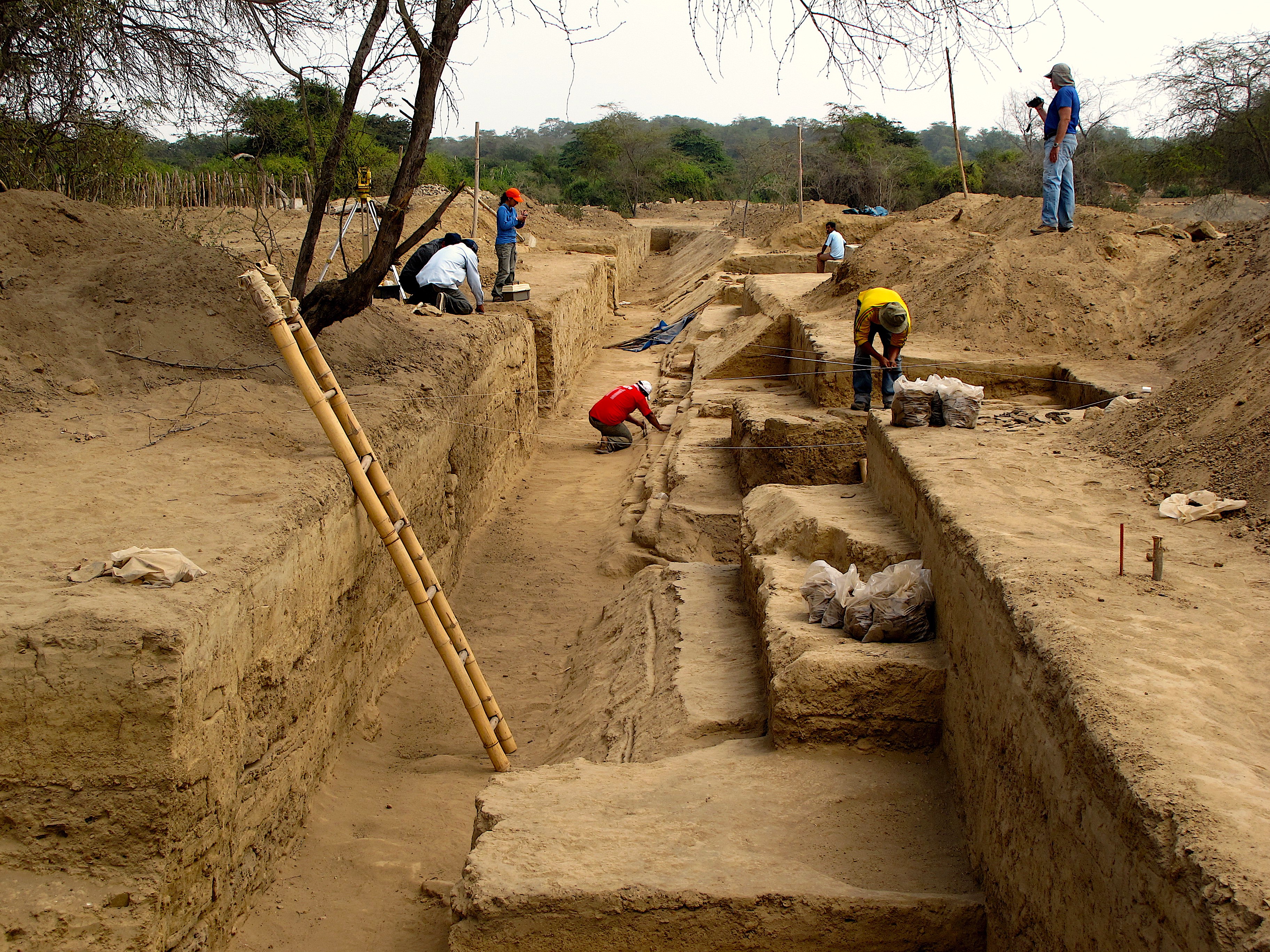
Adventurouspirits
A local offers us a drink of chicha; we sip it from a communal mug under the algarrobo trees. It is delicious, a home made popular fermented drink made from maize. I drink lots hoping it helps my bum feel better, or if not enough to make me not care that, I have a sore bum! Back at the farm, I stand in the nude in the mud beneath a cold shower, Tom keeping watch as I wash the dust and dirt off me!
Enlarge

Adventurouspirits
We explore the museums and more archaeological sites around Tucume and Lambayeque also known for its “king kong cakes” filled with condensed milk and other hip busting calories.
Enlarge
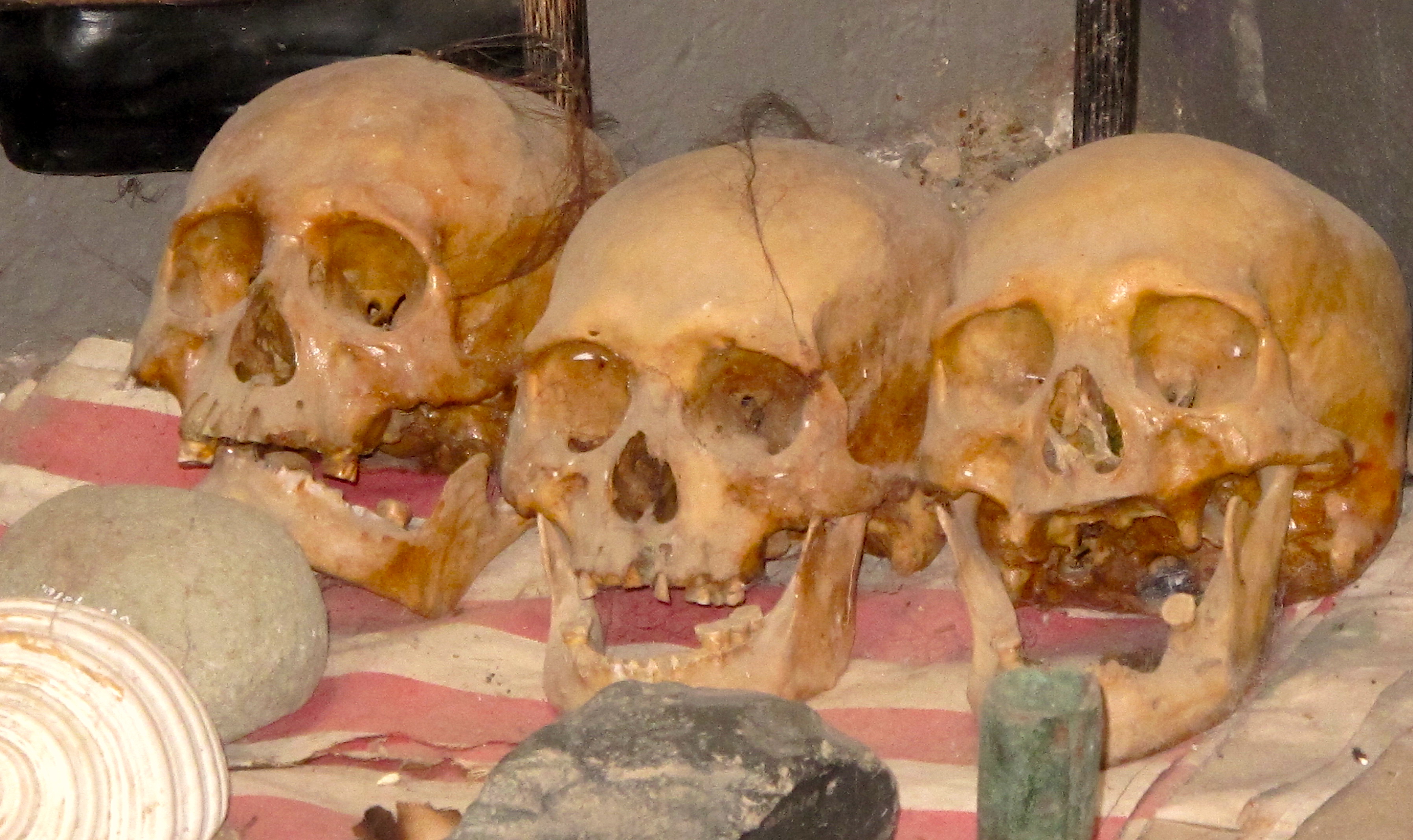
Adventurouspirits
Enlarge
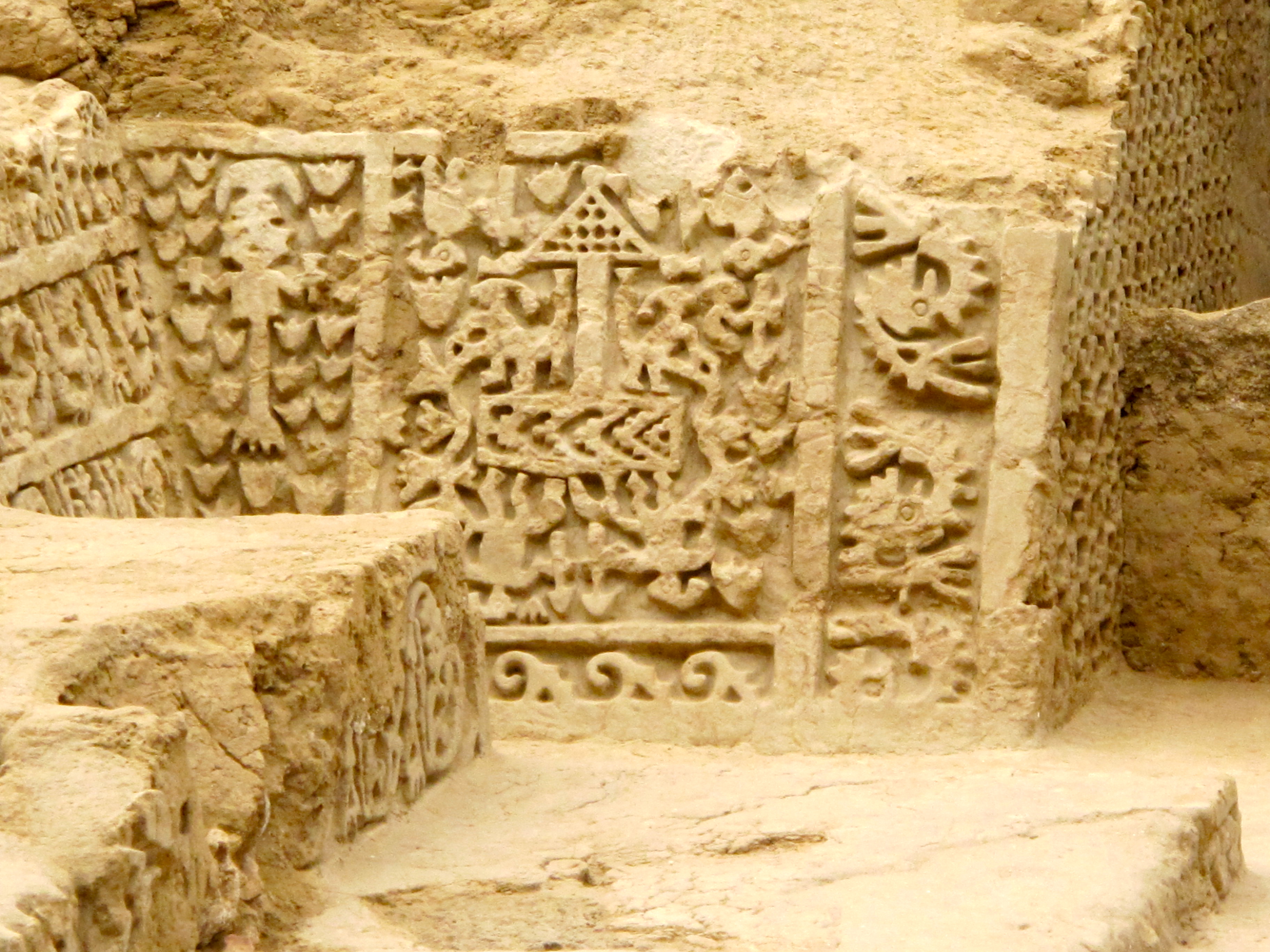
Adventurouspirits
Later we arrived at the coastal village of Pimental. A regular argument we have is which road to take, especially in villages and towns. Tom always seems to underestimate space, so as we approach the corner, our conversations go something like this;
Me “We are not going to make it”
Tom “Yes we will”
Me “I told you we would not make it”
T “Well that was a stupid place to put a food stand”
Me “You are driving down a one way street”
Tom “I know”
Me “Yes but you are going the wrong way”
Tom “Well I will hurry up I am nearly at the corner, then I will turn.”
Me “Watch out there are low wires across the road”
Tom “No problem we will fit under”
Me, “Shit we are caught on the wires!”
Tom “Ask that boy to lift the wires with a stick so we can fit under”
Me “Your Spanish is better, you ask”
Me “Do you think this is a real road?”
Tom “We will find out soon enough”
Finally, we make it to the beachfront and park. Locals wait for the fishermen to return with their catch of the day. The fishermen go out to sea on a one-man reed craft called caballitos. The design is estimated to go back 2000 years and supposedly inspired Thor Heyerdahl Kon Tiki expedition in 1946.
Enlarge

Adventurouspirits
Enlarge

Adventurouspirits
Enlarge
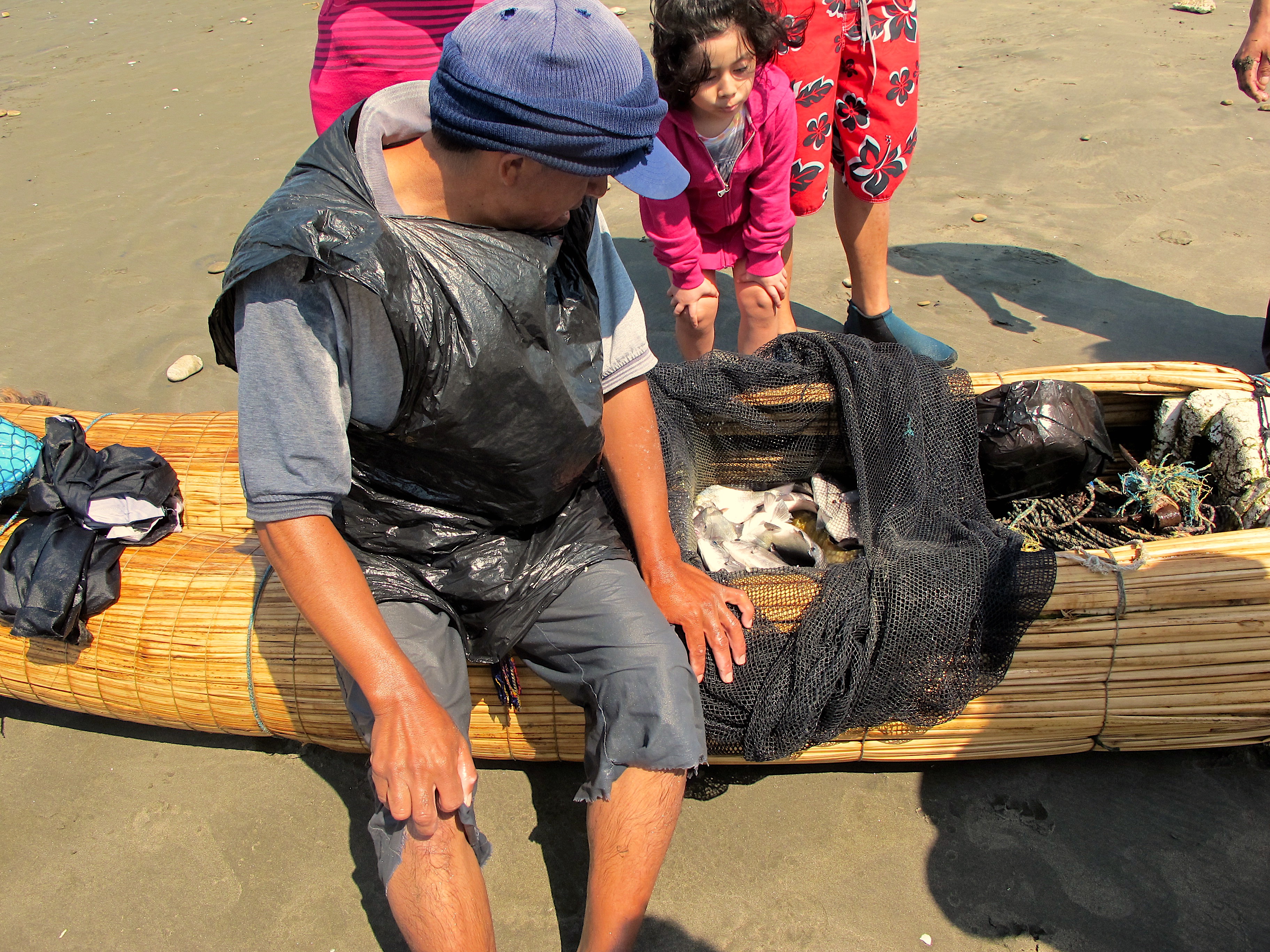
Adventurouspirits
We visit one more archaeological site before heading back inland to the Andes mountains. Waiting taxis filled the dusty parking lot. Taxi drivers chatted under the little tree that offered them some shade from the harsh sunlight waiting for tourists. We purchased our tickets, declined the offer of a guide and began to explore Chan Chan once the world’s largest Adobe city, built around AD 1300, and which covered 36 sq km. It was the largest pre Colombian city in the Americas. At its height, 60,000 residents of the Chimu Empire lived in this huge complex of flat roof mud homes. It is in the middle of one of the worlds driest coastal deserts. We have been very impressed with the museums and archaeological sites in Peru they are world class. Yet when we leave them and head back into regular Peru it is grimy and litter everywhere. What happened to their pride?
Enlarge
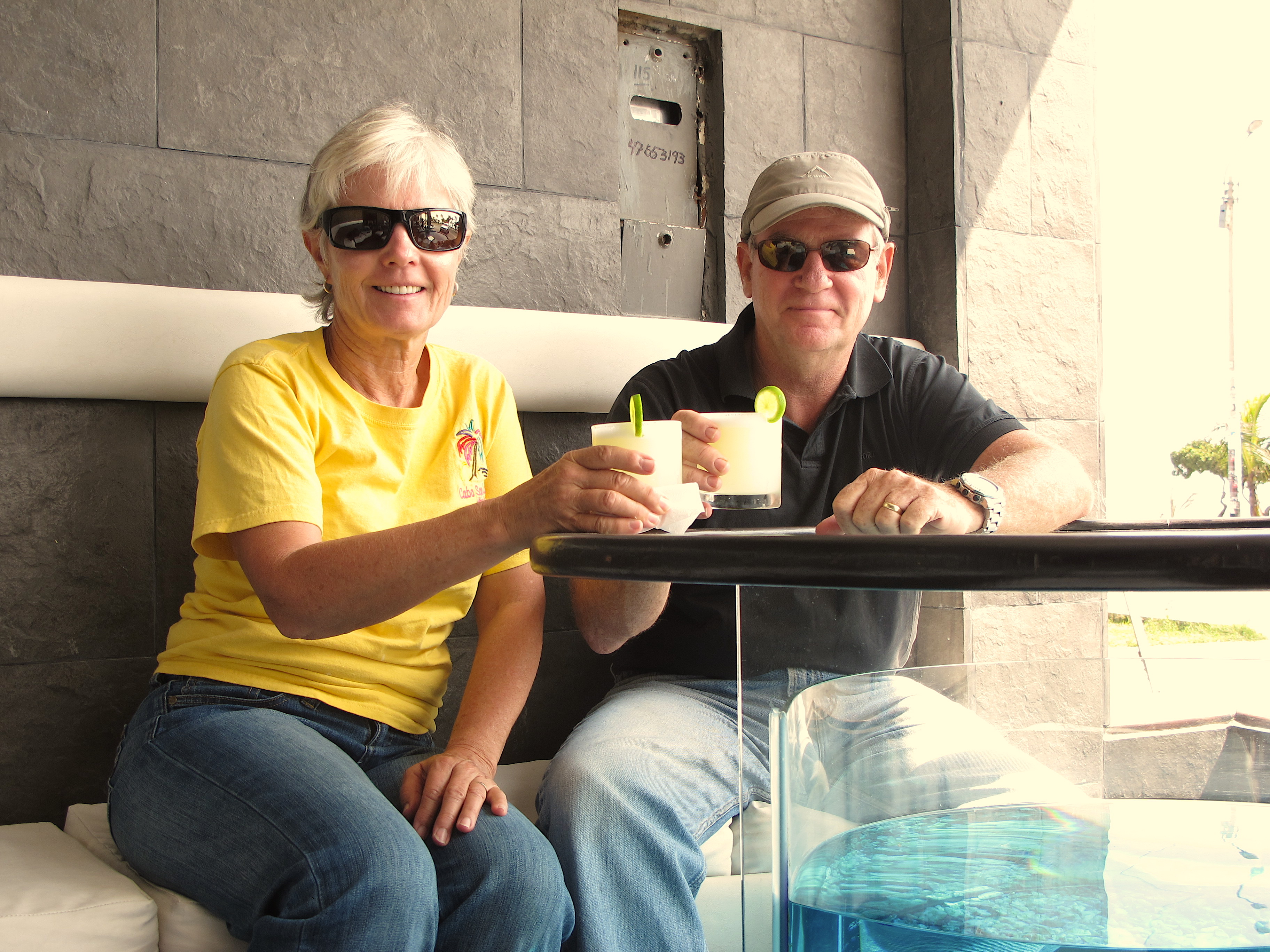
Adventurouspirits
Enlarge

Adventurouspirits
We past the city of Trujillo and just south we once again were treated to an amazing archaeological site and museum. The immense and impressive Moche, Huaca Del Sol and Huaca Del Luna (Temples of the Sun and Moon) and more than 700 years older than Chan Chan. We wandered around the splendid museum, learning about these ancient civilizations. It seems that human sacrifice was always part of ancient civilizations. I am intrigued to know if the victims felt okay about having their throats slit or whether they were petrified. Some were captured victims but others were family members, wives, children and servants who were killed and buried with the leader on his death.
Enlarge

Adventurouspirits
Between the two temples, lie the ruins of the village of the locals. One is not able to visit the Huaca del Sol it is not open to the public. Huaca del Luna is opposite and contains beautiful friezes. Ruth a young Peruvian is our guide up to the Huaca del Luna. She tells us the pyramid is three levels. When the first leader died, he was buried in the temple and then everything was covered up with sand and the next leader built his temple on top of it. Then again, when that leader died his temple was filled with sand and the next leader built his temple on top. So the temples became pyramid shaped and the sands burying the underlying temples preserved the building, murals, friezes and objects.
Enlarge

Adventurouspirits
Enlarge
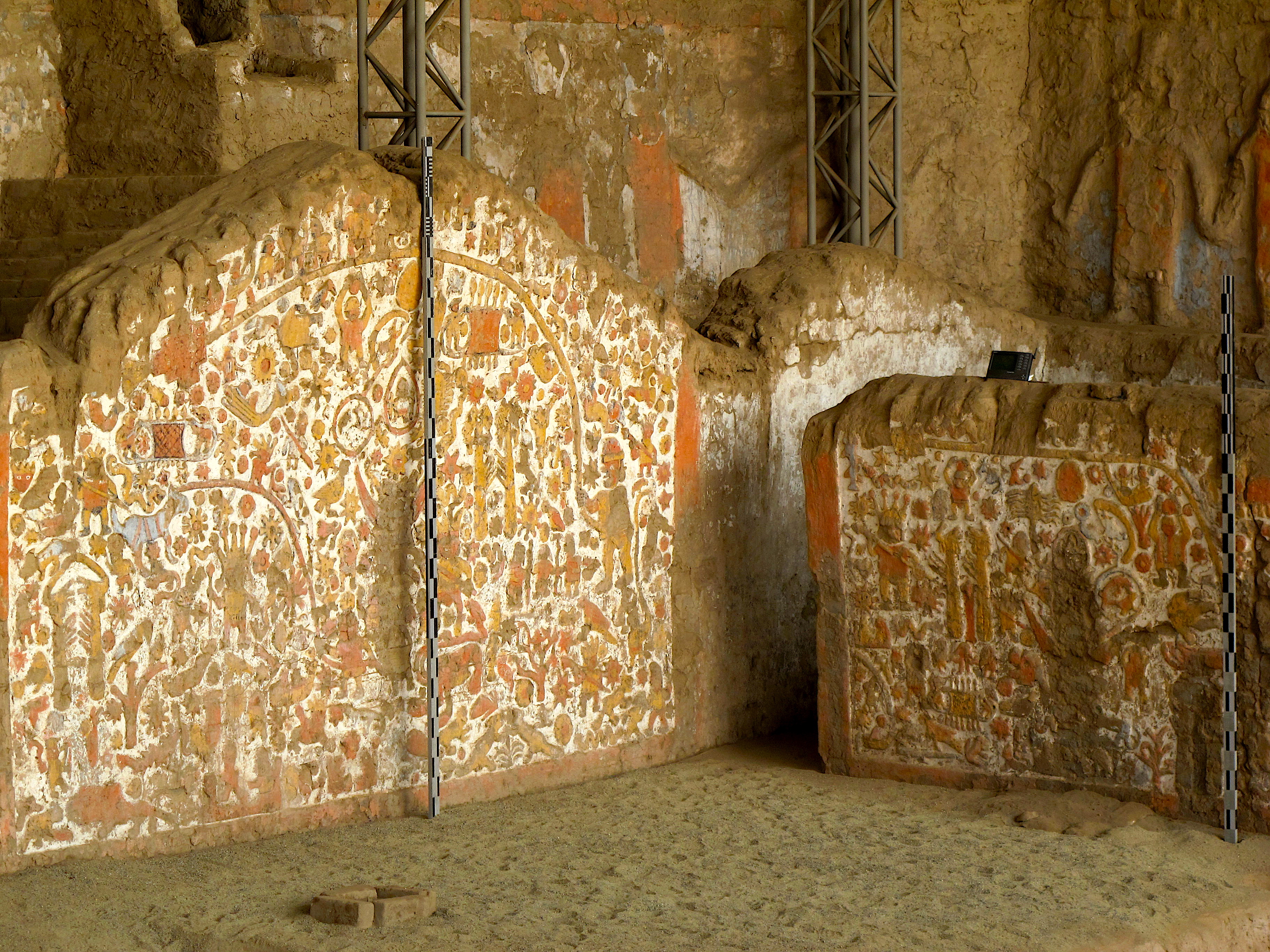
Adventurouspirits
After our archaeological fill, we headed south still following the coastal desert road. It is stunning beautiful, sand dunes and deserted beaches all shrouded in the Coastal Fog called “garúa.”
Enlarge
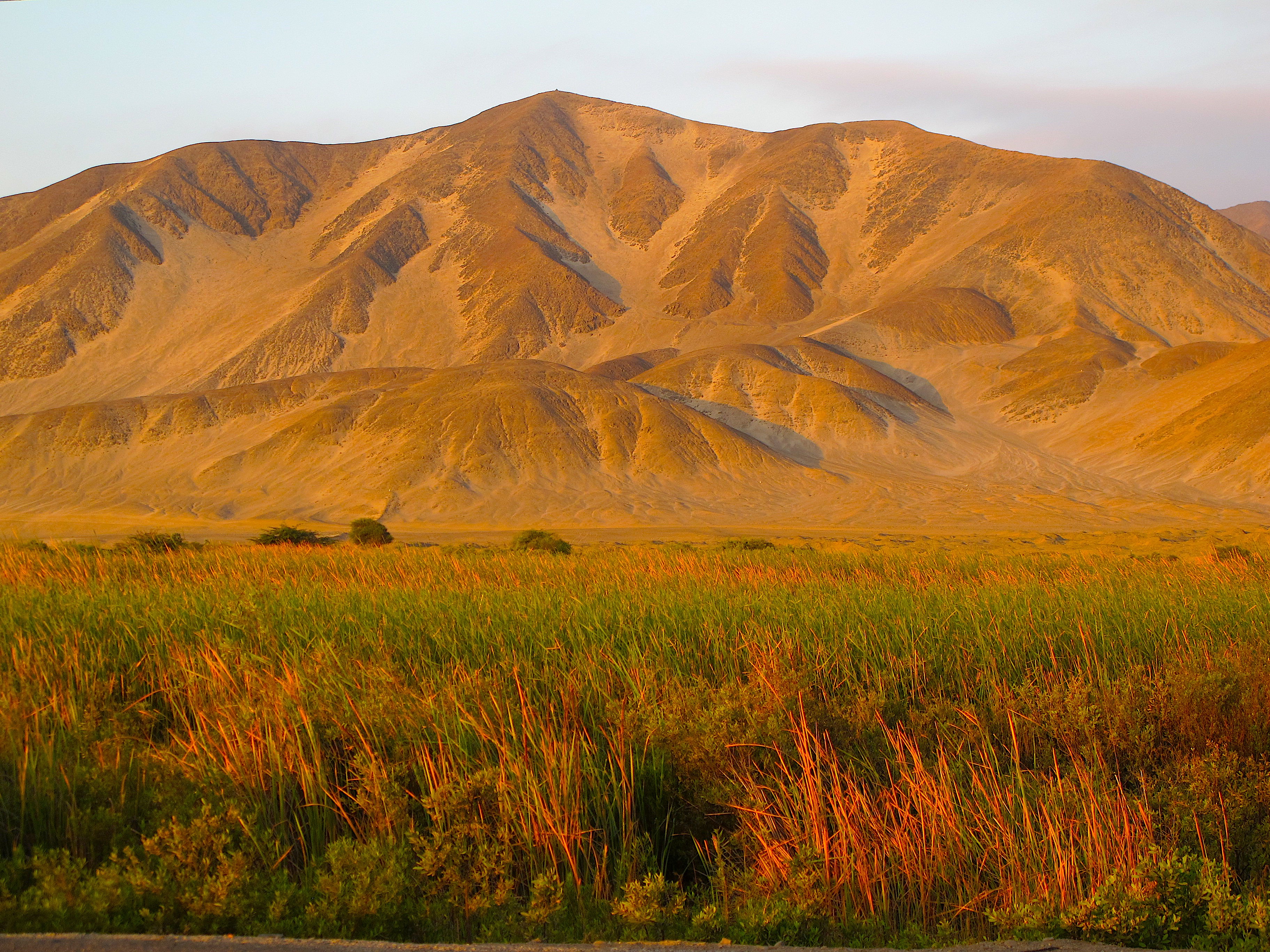
Adventurouspirits
Enlarge
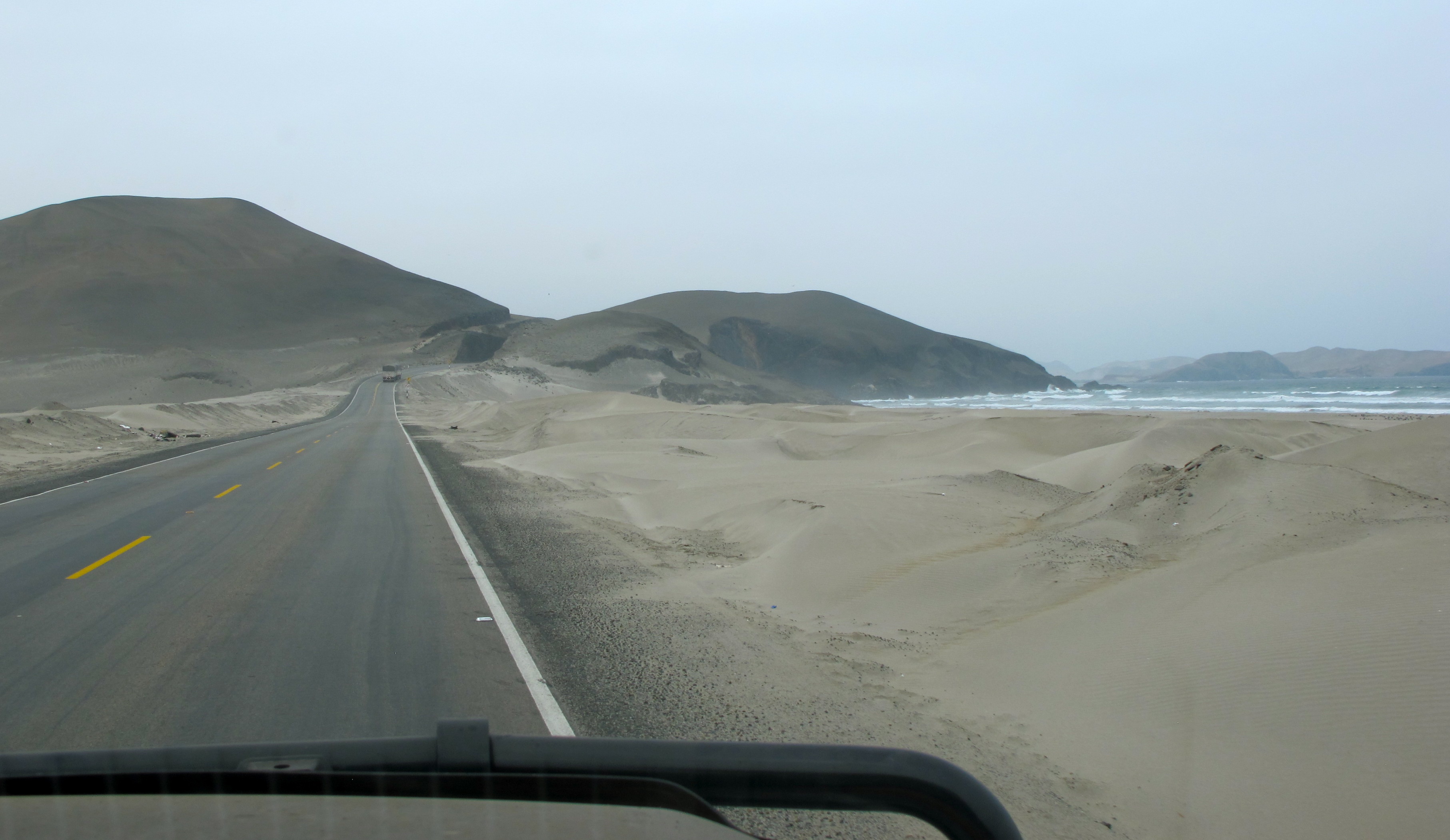
Adventurouspirits
Enlarge
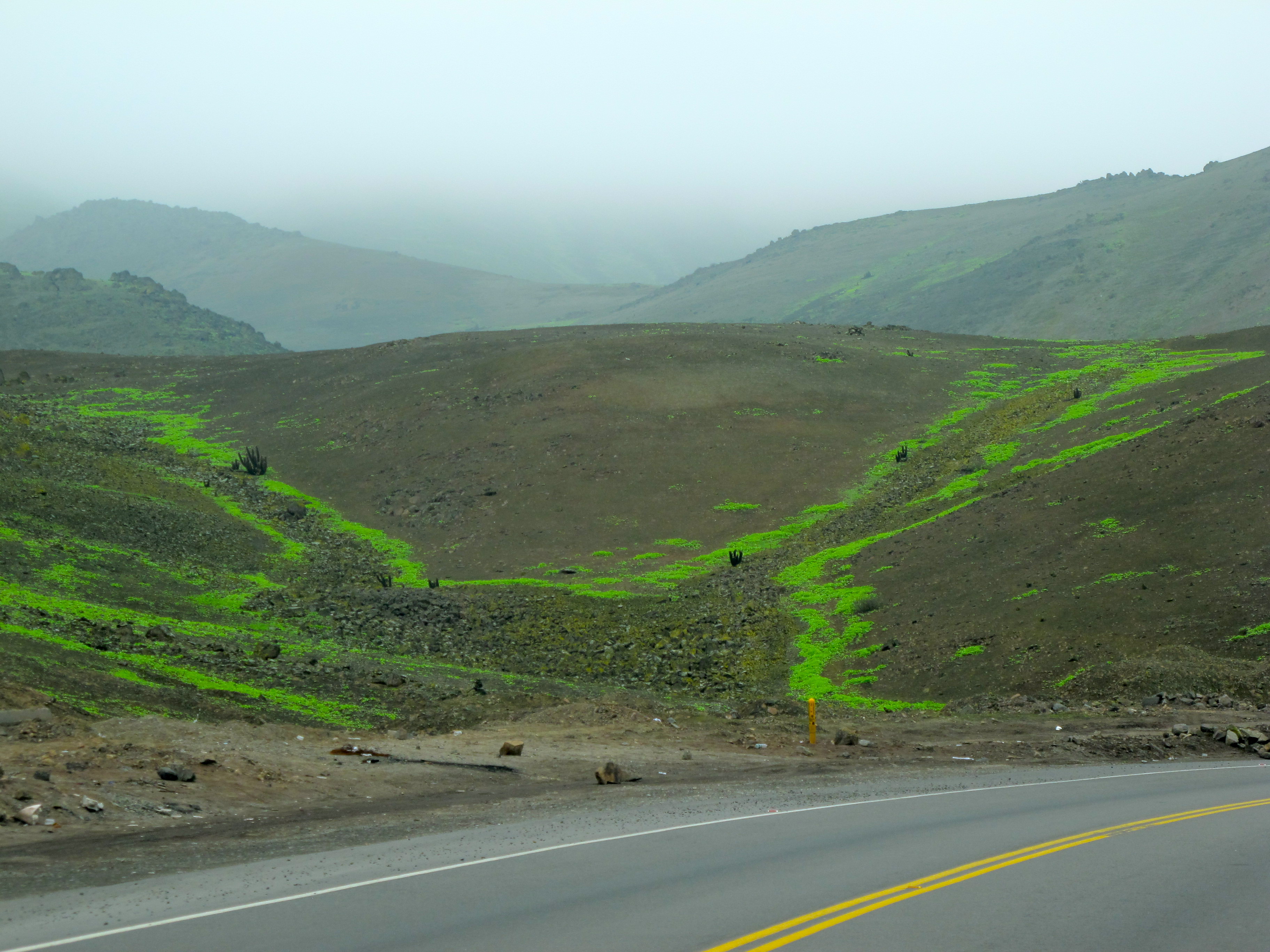
Adventurouspirits
We could smell Chimbote before we saw it. Peru’s largest fishing port and fish processing factories are located in Chimbote. We were tired and it was time to find some places to sleep and eat. As we entered the supermarket in this bustling little town we were faced with 1000’s of people all trying to move through the crowds. “It must be pay day,” I said, as we watched a mother pushing her grocery trolley while breast-feeding the toddler seated in the trolley. Taxis constantly honked their horn as shoppers loaded up their month supplies into the taxis. At sea shipping boats were in the harbour, a wreck lay beached up on the rocks.
Enlarge
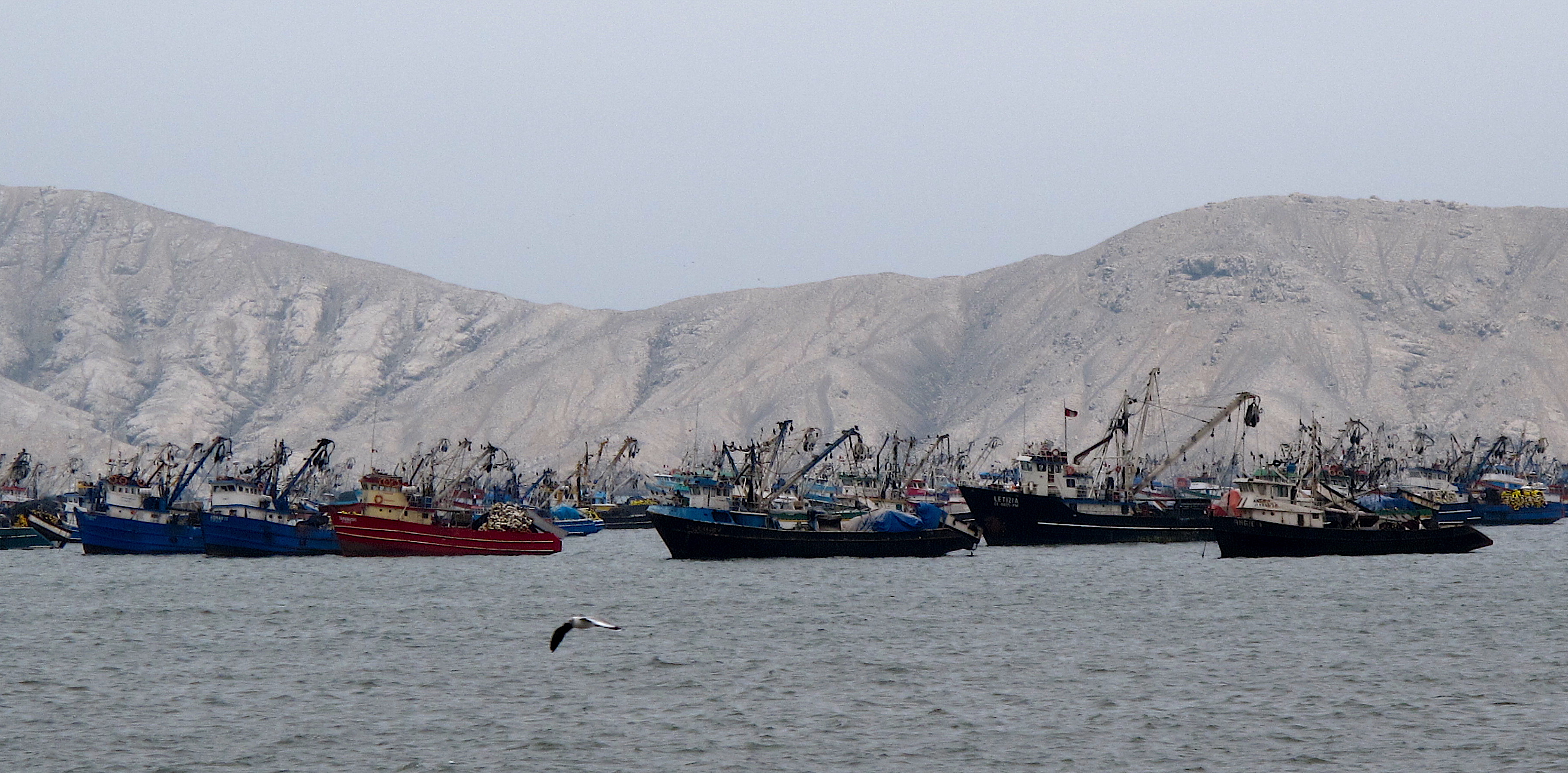
Adventurouspirits
It was time to head for the Andes of Peru. We debate the route, Tom loves the desert and so we head further south before heading west and then up and over the Andes to reach the town of Huaraz.
Enlarge
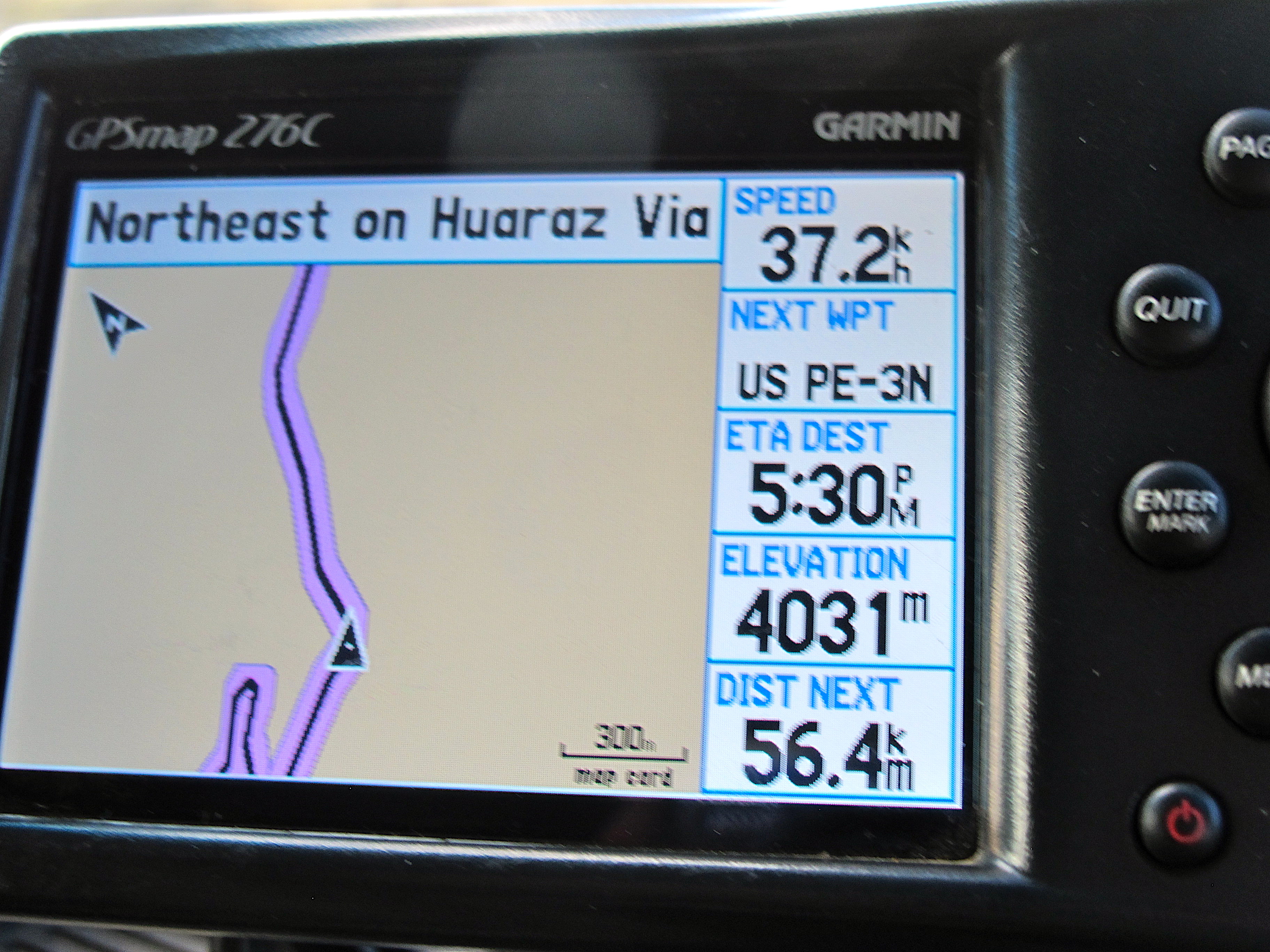
Adventurouspirits
Enlarge
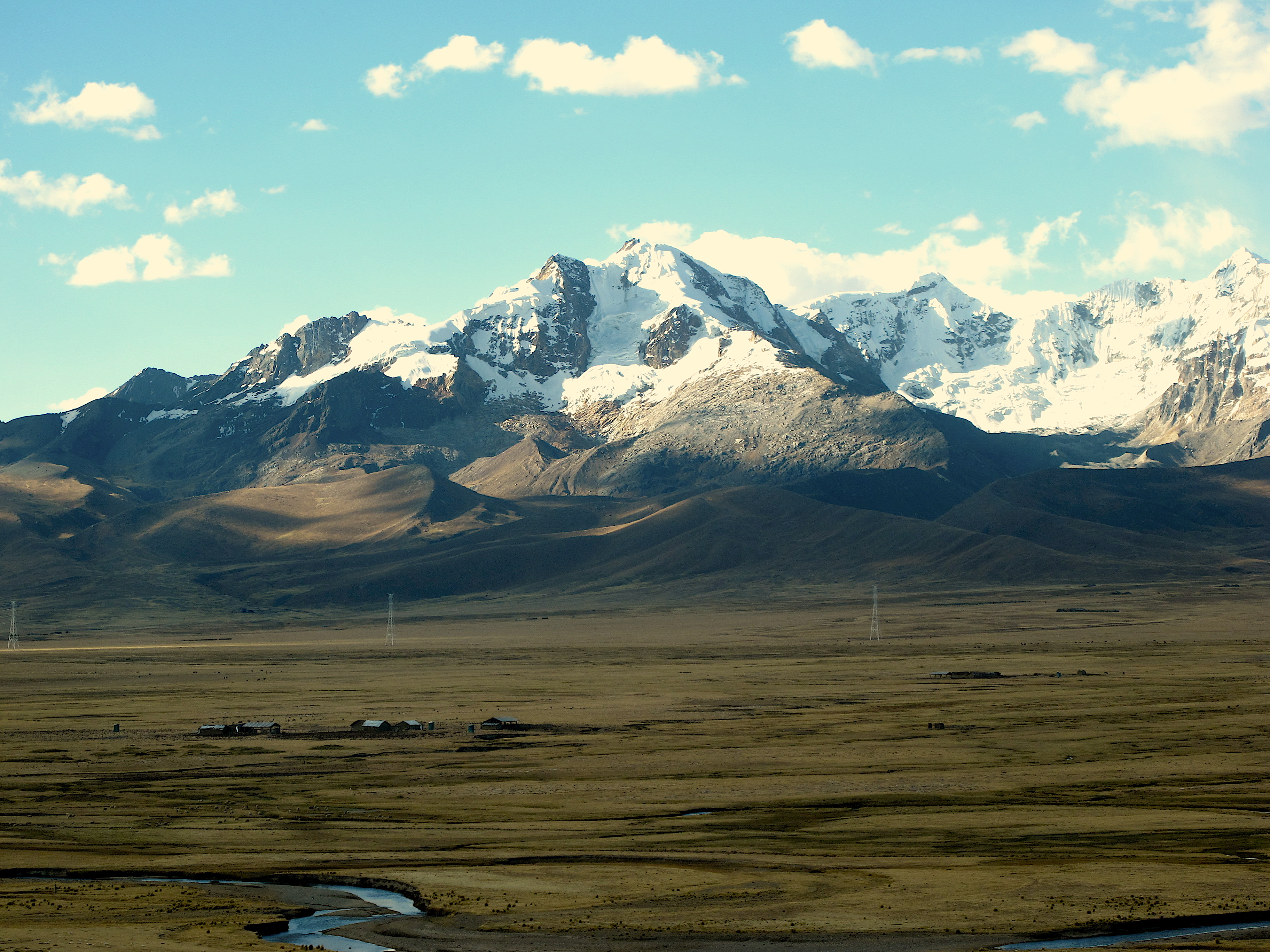
Adventurouspirits
We arrived on a Sunday night and we thought we were in a combination of Nigeria and Angola it was so chaotic!!!, No streets names matched any on our maps, roads were either dug up or filled with vendor stalls, every road we turned into was a wrong one way, it was dark. Ah yes the circus had come to town literally and we were caught up in the loud, chaotic streets as everyone who lived in or around Huaraz descended into the city.
Enlarge
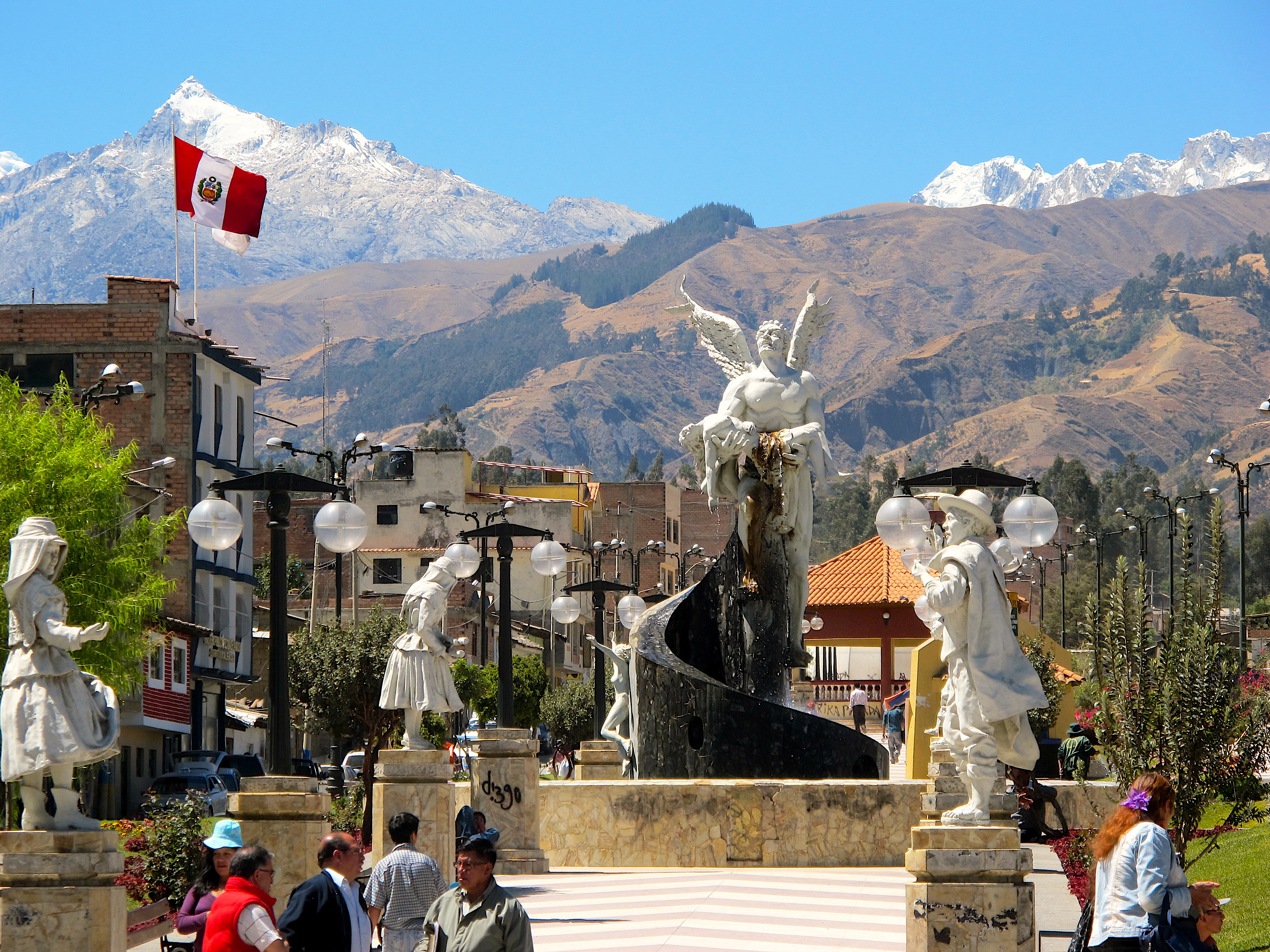
Adventurouspirits
Enlarge
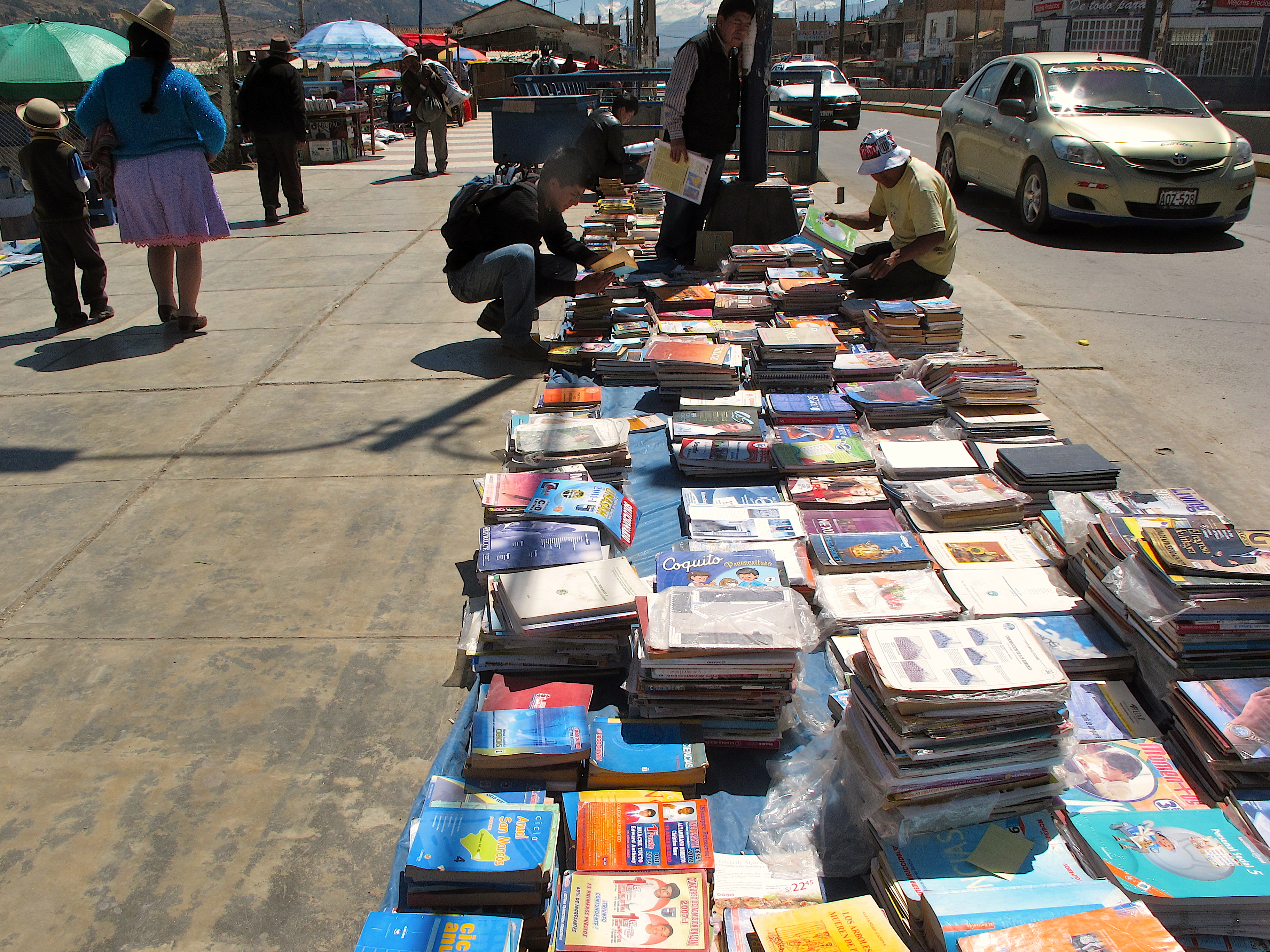
Adventurouspirits
Enlarge

Adventurouspirits
Enlarge

Adventurouspirits
Enlarge

Adventurouspirits
The following morning it was as if everyone had died, where did they all go? Streets were empty, stores shuttered closed a few souls ventured out but we had a problem. Our air ride suspension had had developed “Bad Road Syndrome,” it was time to find a mechanic. We would have to stay in Huaraz and get the suspension fixed. Hiking the mountains will have to wait,
Enlarge
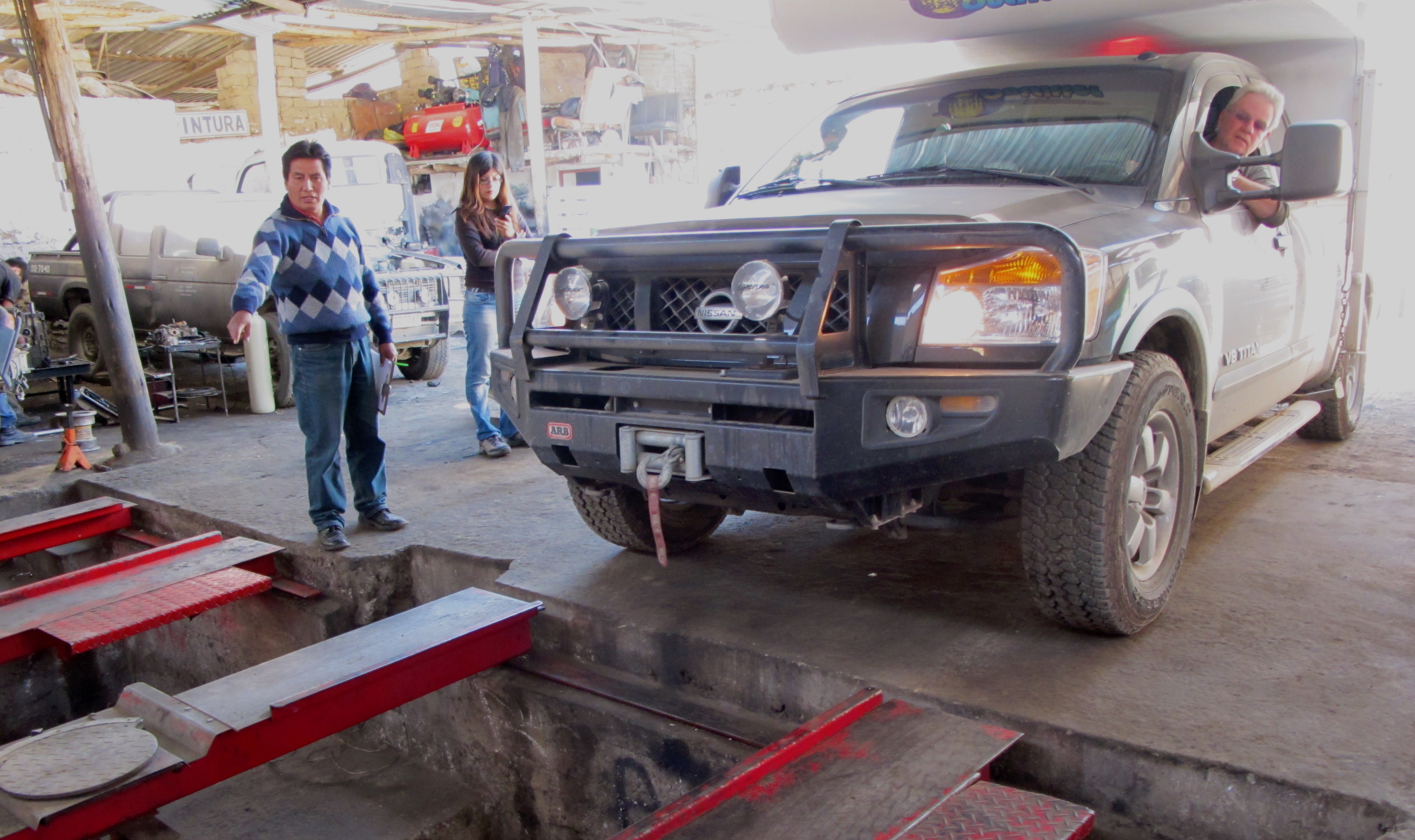
Adventurouspirits
Enlarge

Adventurouspirits
Enlarge
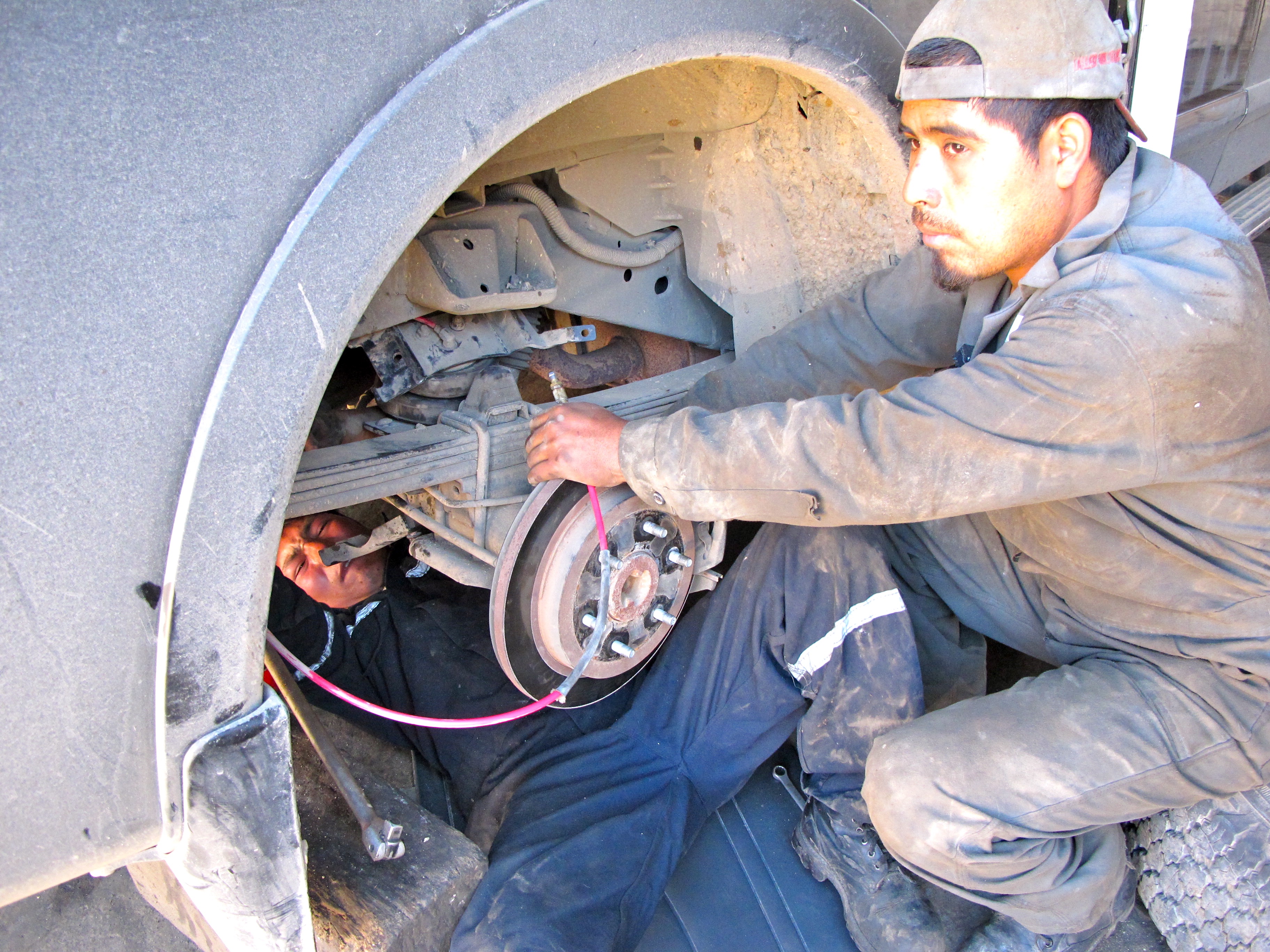
Adventurouspirits
Here are some photos from Huaraz. We were disappointed when we could not explore the mountains, but I think we got something better. We met the locals in Huaraz in our stay of 3 days there and what great folk
Enlarge

Adventurouspirits
Enlarge
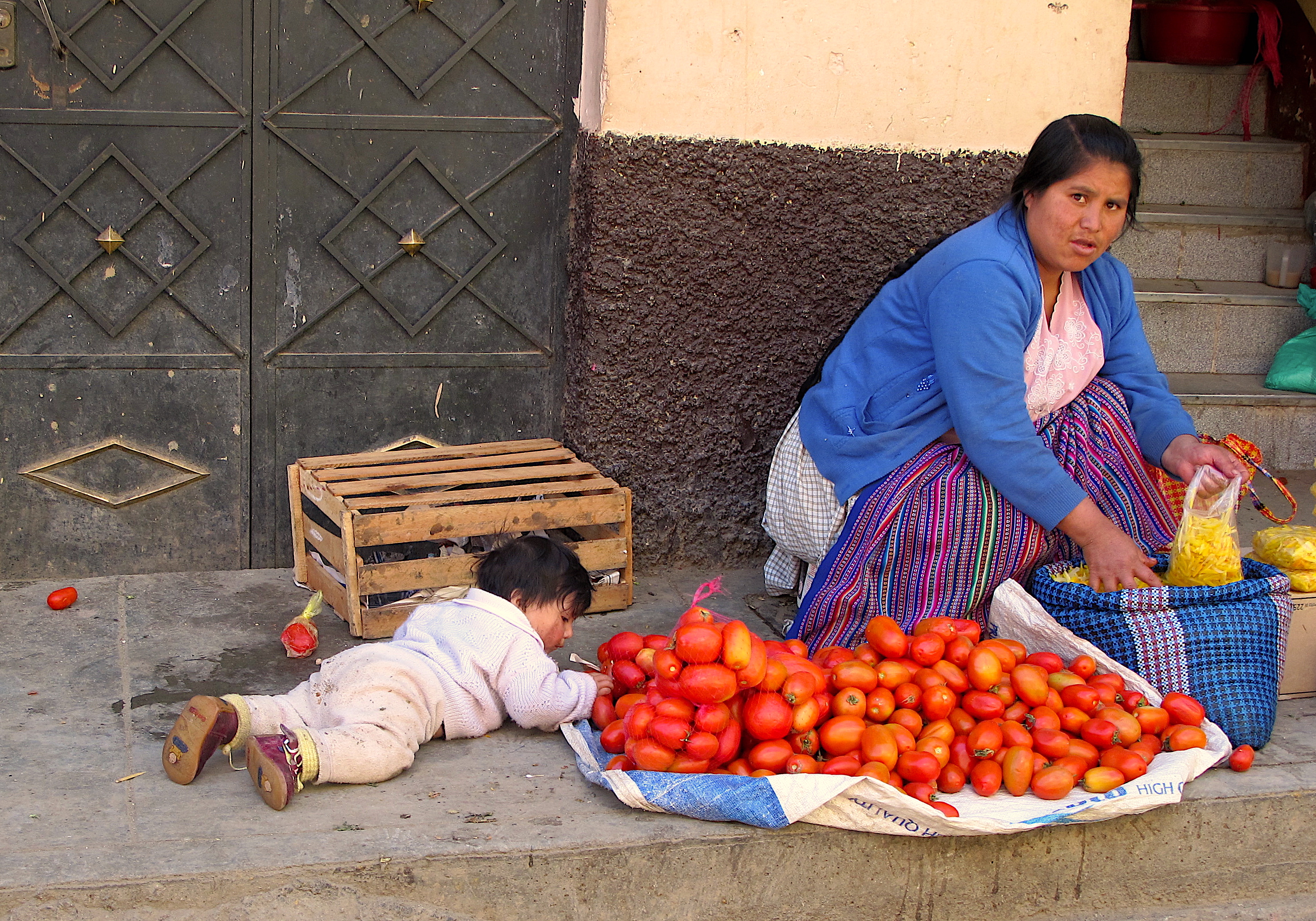
Adventurouspirits
Enlarge

Adventurouspirits
Enlarge

Adventurouspirits

Peru looks magical! Nice entry. Please stop bickering, you two.
Me “Do you think this is a real road?”
Tom “We will find out soon enough”
hahaha that’s my favourite line!!! I use that one lots!
thx for taking me along!:)
We very much enjoy your photo shots and the comments,keep it comming
so we can travell along with you.
All the best regards , Heinz & Lil.